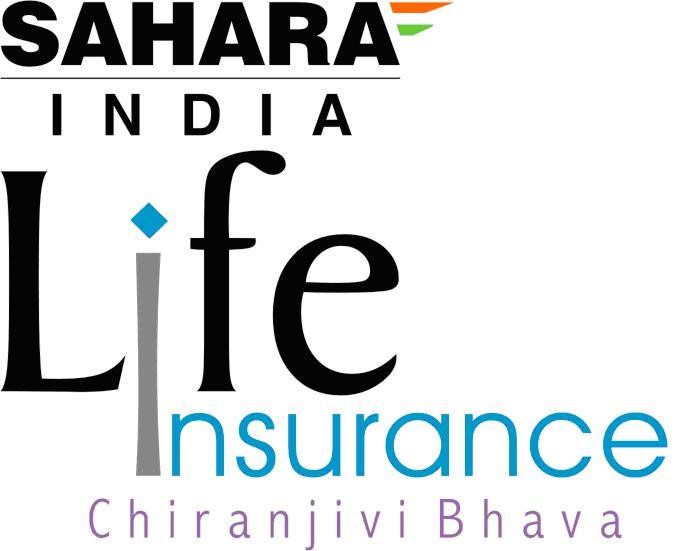What is TDS Refund? How can it affect you?

‘Tax Deducted at Source’ facilitates efficient tax compliance, reduces the burden of taxpayers' return filing, and ensures quick refunds if the tax liability is below the threshold. Still, many people complain about excessive tax deductions, mismatches between refund claims and form 26AS, or delayed refunds. Most of these problems can be quickly and easily resolved if we accurately claim refunds.
This article discusses TDS refunds, what they are and everything you must know for a smooth TDS refund process.
Table of Contents
What is a TDS refund?
In the most simple and concise terms, a TDS refund means a taxpayer getting back the excess tax deducted from the taxpayer’s earnings in the form of TDS if the person's actual tax liability is zero or the total tax paid during a financial year to the central government is less than the total payable during the same period.
As per the direct taxation rules in India, certain types of payments attract deducting taxes at a pre-specified rate at sources. It means a person or company (the deductor) making a payment to another person or company (the deductee) deducts a portion of the payment as tax (at source). It remits the deducted amount to the Central government's account.
The most common examples of payments applicable for TDS are:
- Salary
- Professional fees
- Commission or brokerage
- Rent
- Premature withdrawal from Employees’ Provident fund
- Interest payments on securities
- Dividend
- Interest from fixed deposits
- Income from game shows, lotteries
- Cash withdrawal beyond a limit
- Crypto trading
The tax deductible rate at source for such payments is not the same. Also, the deductee not having a PAN (permanent account number) also attracts TDS at a high rate. For example, interest on fixed deposits attracts TDS at 10%, while payments from game shows can attract TDS at 30%.
Now, despite the applicability of TDS, the actual income tax payable by a taxpayer depends on various factors, like:
- total income from all other sources during a financial year
- prevailing income tax slabs during the period
- Tax deductibles available to a taxpayer
Based on these factors, if a taxpayer is categorised under a lower tax slab than the rate applicable under TDS, they are entitled to receive a credit (refund) of the excess tax paid in the form of TDS.
Example: You owed ₹10,0000 as a payment from a company you are working with during FY 2023-24. The company deducts ₹10000 from your payment and transfers ₹90000. At the end of the financial year, you calculate your total taxable income as NIL. So, you file a tax return of NIL taxable income and get the refund of ₹10000 already deducted from your payment. There can be various other instances of TDS refunds.
How to claim a TDS refund?
It is a common question among taxpayers nowadays, especially among senior citizens with considerable interest income from fixed deposits and people involved in part-time work engagement.
Let’s look at the standard route for claiming a TDS refund.
- Step 1 - Get the TDS certificate from the deductor. The respective bank branch will provide the certificate for TDS on fixed deposits. A TDS certificate includes the total tax deducted, tax receipt number, the deductee’s PAN, etc. There can be two types of TDS certificates - quarterly and annual.
- Step 2 - Visit the income tax return filing portal.
- Step 3 - Log into the portal with your username and password. If you are already registered in the tax filing portal, register yourself first.
- Step 3 - Choose the right ITR form. For individuals, ITR-1 or ITR-4 should be applicable.
- Step 4 - Fill in all the fields in the ITR form along with the details from the TDS certificate you received from the deductor (employer, bank or others).
- Step 5 - Submit the ITR form and e-verify for completing the return submission. You can verify ITR using AADHAAR-based OTP. You can also e-verify using a digital signature. People without the option of e-verifying can send the ITR-V form to the ‘Centralised Processing Centre, Income Tax Department, Bengaluru - 560100, Karnataka’ for offline tax return verification.
Once submitted and verified, the income tax department assesses the tax return with data at their end. When the income tax assessment officer approves a refund, the department transfers the refund to the taxpayer’s registered bank account via direct transfer.
Timeframe for Receiving a TDS refund
Earlier, the income tax department used to take months to verify, approve and process TDS refunds as most of the documentation was in physical or paper format. Now, with online return submission and e-verification, the department usually takes a month or two to process TDS refunds for e-verified tax returns. For offline verification, it may take up to 6 months from the date of receiving the ITR-V at the Centralised Processing Centre.
Impact of TDS refunds on taxpayers
TDS refunds and related challenges can have various positive and negative implications for taxpayers.
Let us first understand the positive impacts.
- Financial relief - A TDS refund can be a welcome financial relief, like bonus income, for people with limited income.
- Better cash flow - For professionals and small business owners, TDS refunds can improve cash flow and working capital.
- Reduced tax burden - TDS Refunds reduce the actual tax burden for small taxpayers.
- Fair taxation - Getting a TDS refund improves the reputation of the taxation system in a country among individual taxpayers and small income earners. It shows that the taxation policy is not regressive.
- Motivation in tax compliance - Confidence about receiving TDS refunds motivates taxpayers to file returns proactively. It also helps the tax authority to widen the tax base.
The negative impacts associated with challenges to TDS refunds are:
- Unnecessary hassles - Sometimes, because of various reasons, like mismatch in data, delays in verification, etc., the tax department may take longer than usual to process refunds. It may cause unnecessary hassles for taxpayers.
- Stress from scrutiny - Tax authorities may randomly decide to scrutinise tax returns, especially those with unusually excessive refund claims. It may create an excess compliance burden and stress for taxpayers.
- Financial loss—Delays in TDS refunds may cause financial opportunities to be lost for individual taxpayers and small businesses. Senior citizens with limited incomes may also experience financial problems following tax refund delays, and sources .
Common challenges in claiming TDS refunds
The online return submission portal has made return submission and TDS refunds claiming a lot easier. However, still many small taxpayers suffer various challenges in claiming TDS refunds. Some of these common challenges are:
- Mismatch in tax information
Mismatch in TDS-related information is the most common among the challenges. This happens when data in Form 26AS does not match with the taxpayer’s TDS refund claim. The mismatch may arise for various reasons, such as errors in ITR filing, incorrect tax records, incorrect PAN, or errors in the deductor-issued TDS certificate.
- Deductor-related issues
Sometimes, a deductor may collect the TDS but delay or miss to remit the collected amount to the government account. It affects refunds to respective taxpayers.
- Tax return-related issues
Delays in ITR verification or failure to verify within the stipulated timeline are also among the major reasons behind TDS refund-related issues. Sometimes, taxpayers miss the tax return submission deadline, which can also cause challenges in claiming TDS refunds for that assessment year.
- Delays in processing
People often submit their tax returns at the last moment of the due date. It causes an excessive processing burden on the assessing officers and the infrastructure. It causes delays. Besides, the processing of refunds gets delayed if a tax return is selected for scrutiny.
- Communication issues
The tax department regularly provides updates on the status of refund processing on the portal www.incometaxindiaefiling.gov.in. Taxpayers can log in using their username and password and check the status. Accordingly, they can respond if there is any query from the assessing officers. However, lack of awareness and updates about these options often cause challenges for taxpayers in getting timely TDS refunds.
- Bank account-related issues
Sometimes, bank accounts become inactive or inoperable due to prolonged inactivity, delay in KYC submission and many other reasons. It causes problems for the tax department to transfer the refunds, causing delays.
- Outstanding tax liabilities
Suppose a taxpayer has outstanding tax liability from previous financial years. In that case, the tax authority may refuse to release refunds despite entitling the refunds to be credited to the taxpayer for the current financial year. If the outstanding liability is disputed, the taxpayer may need to meet the assessing officer or take legal steps.
Tips For Ensuring a Smooth TDS Refund Process
Taxpayers should be careful about a few things to ensure and enjoy a smooth TDS refund process. These factors are:
- Accuracy in information
This is the foremost important step for smooth TDS refunds. Check all the information you are providing in the ITR twice to avoid inaccuracy, starting from PAN details to TDS payment details and bank accounts. Verify your Form 26AS. These small steps can prevent many future headaches.
- Timely return filing and verification
You should not wait for the deadline to submit tax returns or verification of your return. It is advisable to submit and e-verify ITR as soon as you get the TDS certificates from the deductors. Link AADHAAR with bank accounts and choose to e-verify as soon as you file the ITR. If you are choosing the offline route to verify the ITR, take into account the possible delays in the transit. The tax department allows you to submit the ITR-V within 30 days from the filing of the ITR. Do not wait for the last week.
- Tracking refund status regularly
Keep track of refund status and check if the department has raised a query or not. Try to resolve queries, if any, at the earliest.
- Contact the deductor
Usually, getting a TDS certificate proves that the deductor has remitted the deducted amount to the government. Still, you should contact the deductor in case of any discrepancies.
- Professional assistance
It can be difficult for senior citizens, taxpayers filing ITR for the first time and small businesses to follow all the processes related to claiming TDS refunds. So, it is advisable to seek professional assistance from tax experts.
Conclusion
Many people today understand TDS refunds, but they still face challenges while claiming refunds for their personal accounts. The direct tax compliance process has become much easier and more accessible for small taxpayers. Technology has also reduced the time to refund excess tax paid. However, lack of awareness, inability to use online tools, and absence of planning pose several challenges. We hope this small discussion will facilitate a better understanding of how to claim TDS refunds among individual and small taxpayers.





























